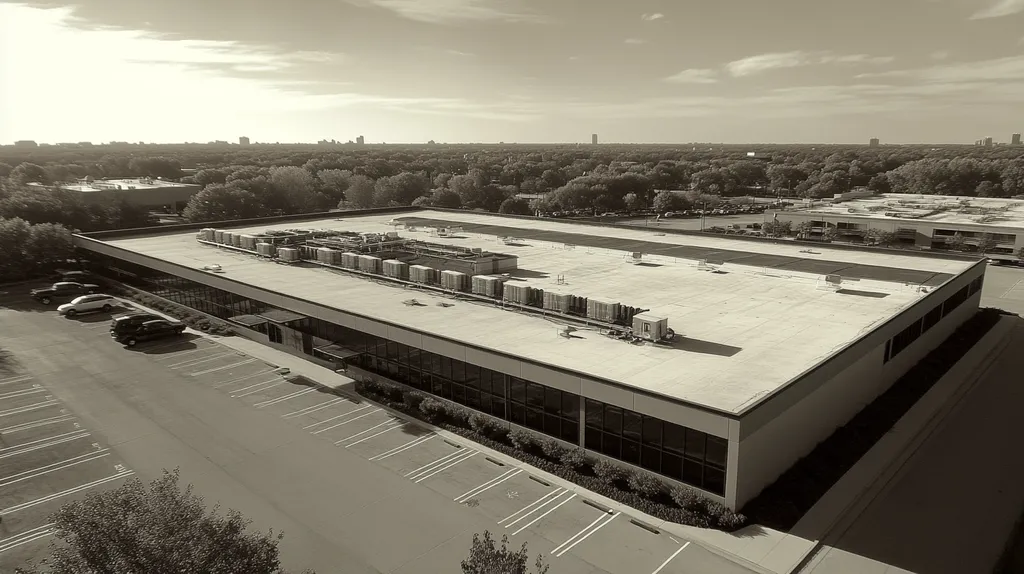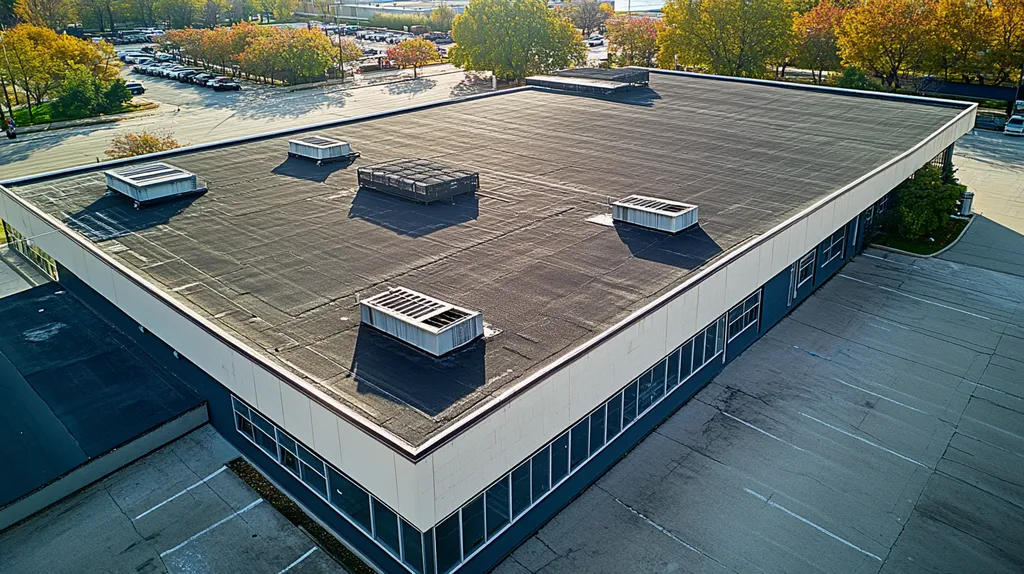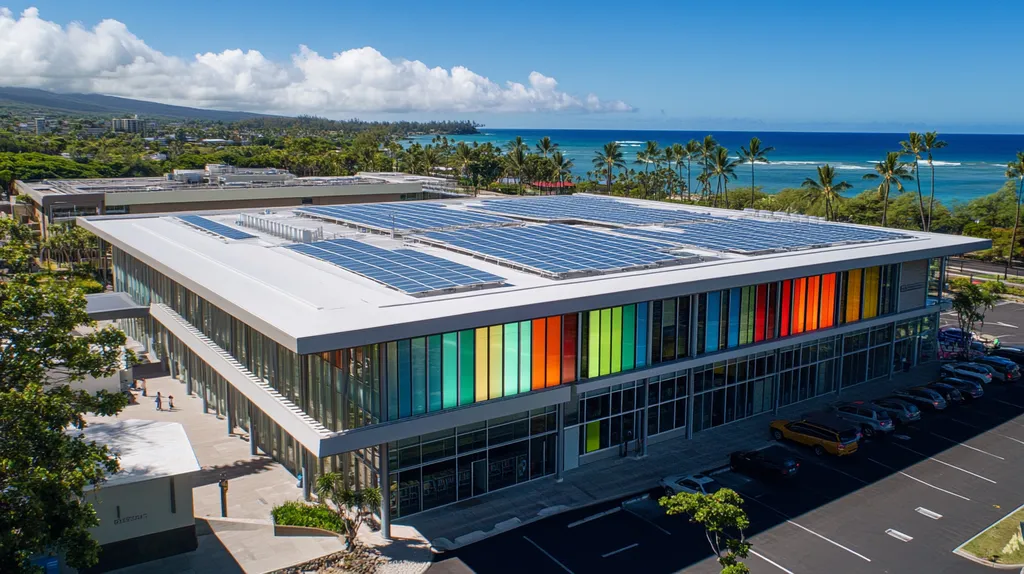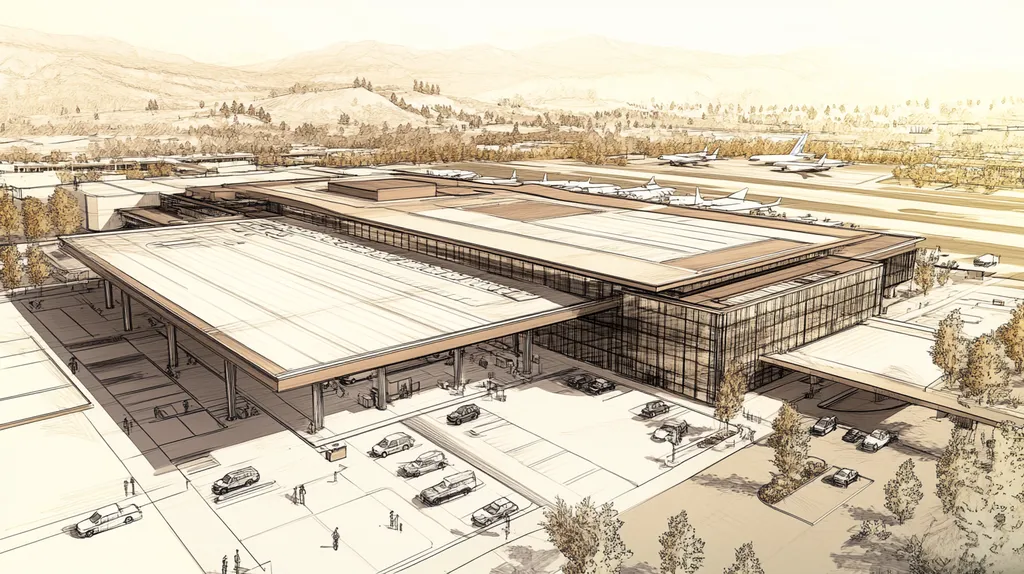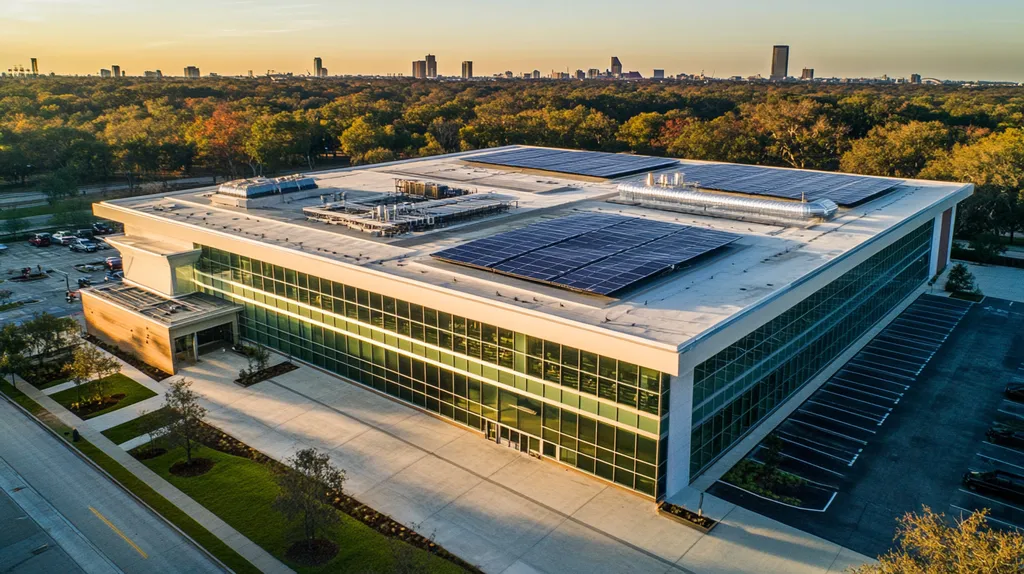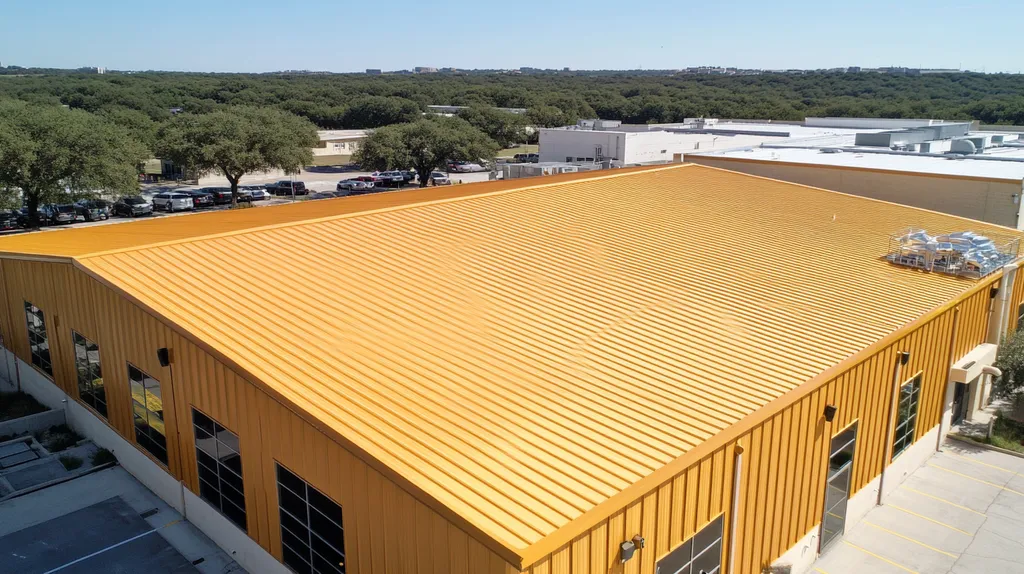Industrial roofing accidents claim over 50 lives annually, with falls accounting for 33% of construction-related fatalities according to OSHA data. For facility managers, implementing proper safety measures isn’t just about compliance—it’s about preventing catastrophic incidents that can cost lives and millions in damages.
This comprehensive guide examines critical safety components across performance, financial, compliance, and operational domains. By following these actionable guidelines, facility managers can create safer work environments while protecting their organizations from costly litigation and regulatory penalties.
From assessing roof conditions to establishing emergency protocols, each section provides practical steps for developing and maintaining an effective industrial roofing safety program.
SECTION 1: PERFORMANCE FACTORS
The importance of safety in industrial roofing projects cannot be overstated. According to the U.S. Bureau of Labor Statistics, falls from heights are one of the leading causes of workplace injuries and fatalities. A seemingly minor oversight in safety protocols can trigger significant accidents, legal repercussions, and project delays. Therefore, facility managers must prioritize safety by carefully assessing roof conditions, reviewing fall protection systems, and continuously monitoring environmental factors. Addressing these performance factors is essential for protecting workers and ensuring smooth operations.
Assessing Roof Surface Conditions and Hazards
Prior to any industrial roofing project, it is crucial to conduct a comprehensive assessment of the roof surface. This involves identifying potential hazards such as surface deterioration, protruding elements, and existing water damage. Regular inspections can uncover issues that, if ignored, significantly increase the risk of accidents.
Facility managers should establish a thorough checklist for roof inspections that includes looking at seams, drainage areas, and flashings for signs of wear and tear. Timely intervention to address these problems not only reduces risk but also improves overall roof performance.
Furthermore, documenting the roof’s condition serves as an essential reference for future maintenance and safety evaluations. This proactive approach curtails unplanned interruptions and cultivates a safer work environment.
Key Action Items
Evaluating Fall Protection Systems Effectiveness
Robust fall protection systems are vital for ensuring worker safety during roofing projects. Facility managers must assess existing fall protection strategies to verify compliance with OSHA standards and suitability for the specific roof type. This involves examining the efficiency of guardrails, personal fall arrest systems, and safety nets.
Regular training on the proper use of these safety systems is also essential to maximize their effectiveness. A well-informed workforce is more capable of identifying fall risks and responding appropriately.
Incorporating advanced safety technology like edge protection or warning systems can further bolster worker safety. By adopting these measures, facility managers demonstrate their commitment to compliance and employee well-being.
Key Action Items
Monitoring Weather and Environmental Impact on Safety
Weather plays a significant role in safety during industrial roofing tasks. Rain, high winds, and extreme temperatures can amplify risks for workers, making it essential to monitor weather forecasts diligently. Facility managers should implement clear protocols for suspending work during hazardous conditions.
Temperature fluctuations can also impact roofing materials, as certain adhesives may fail to perform effectively in cold weather, jeopardizing the roof’s integrity. Therefore, understanding these environmental influences is key to planning safe working conditions.
By establishing a weather-responsive safety plan, facility managers can ensure that teams are ready to adapt to unexpected changes. This flexibility not only prioritizes safety but also helps keep projects on schedule and within budget.
Key Action Items
SECTION 2: FINANCIAL CONSIDERATIONS
Implementing safety measures in industrial roofing projects is not merely a compliance issue; it’s a critical financial strategy. A single workplace accident can lead to direct costs averaging $40,000, excluding potential business losses and damage to reputation. Facility managers need to incorporate costs for safety equipment and training into their budgets while recognizing the long-term benefits these investments can bring. This section outlines essential financial considerations that guide effective decision-making.
Budgeting for Safety Equipment and Training
Investing in safety equipment and training is vital for minimizing risks during industrial roofing projects. While the costs associated with harnesses, safety nets, and protective gear can add up—especially for larger crews—these expenses pale in comparison to potential liabilities from accidents.
Furthermore, providing thorough training for employees fosters a culture of safety. Though training programs may seem costly, they can save organizations significant amounts when considering the price of accident-related incidents. A well-planned budget treats safety measures as essential investments, seamlessly integrating them into daily operations.
By prioritizing safety in budgeting, companies create proactive environments that protect both employees and assets.
Key Action Items
Cost-Benefit Analysis of Safety Investments
Facility managers often face challenges in justifying the expenses associated with safety investments. A cost-benefit analysis clarifies these costs by measuring potential benefits against expenditures. For example, spending on safety training can yield returns of up to $6 for every dollar invested, thanks to reduced workplace incidents and enhanced productivity.
Moreover, companies that emphasize safety frequently enjoy lower insurance premiums. Insurers recognize lower-risk profiles and may offer incentives that offset initial investment costs. Keeping track of these expenditures and savings centrally can help make a strong case for these safety investments.
By documenting incidents in relation to implemented safety measures, facility managers can underscore the financial benefits of these investments. Over time, the financial advantages of investing in safety can greatly exceed initial costs, positioning the organization as a leader in safety practices.
Key Action Items
Planning for Contingency and Compliance Penalties
Beyond investing in safety, it’s essential to plan for unexpected events and potential compliance penalties. Non-compliance with safety regulations can lead to fines in the hundreds of thousands of dollars. Therefore, creating a budget that accounts for these contingencies prepares organizations for any financial impacts.
Facility managers should conduct regular compliance audits to identify vulnerabilities. Allocating a portion of the overall budget for unexpected expenses, including fines or safety improvements, is a prudent approach. This proactive strategy not just mitigates financial risks but enhances the company’s public image, fostering trust.
Ultimately, maintaining compliance helps to minimize unexpected financial burdens and can create new business opportunities. It is crucial for employees to understand compliance requirements and their financial implications to foster a culture of safety awareness.
Key Action Items
SECTION 3: COMPLIANCE REQUIREMENTS
Compliance with safety standards is non-negotiable in industrial roofing; it safeguards both workers and project viability. The Occupational Safety and Health Administration (OSHA) reports that falls are a leading cause of workplace fatalities, necessitating a thorough understanding of industry regulations. Facility managers must ensure compliance to maintain safety, avoid penalties, and uphold project timelines. This section highlights key compliance issues, emphasizing OSHA standards, essential safety protocols, and documentation practices.
Understanding OSHA Fall Protection Standards
OSHA’s fall protection standards, primarily found in Standard 1926.501, set stringent requirements for industrial roofing. For any work performed at heights greater than six feet, measures such as guardrails, safety nets, or personal fall arrest systems are mandatory. Facility managers must ensure these safety measures are effectively implemented to reduce risks of serious injury or death.
Neglecting these requirements can lead to significant penalties, with fines often reaching thousands of dollars. Comprehensive training is essential for all personnel to ensure they are aware of these standards. Regular safety meetings further reinforce these protocols, cultivating a workplace culture dedicated to safety.
Staying informed about changes in OSHA regulations is critical for maintaining compliance and continually improving site safety. By actively promoting adherence to these standards, facility managers play a vital role in creating a safer work environment.
Key Action Items
Implementing Mandatory Safety Protocols and Inspections
Mandatory safety protocols are essential for protecting workers during roofing projects. Facility managers should establish pre-job safety meetings to outline potential hazards, proper equipment usage, and emergency procedures. This approach fosters proactive engagement with safety practices.
Regular inspections must be conducted throughout each project to identify and address hazards proactively. Using inspection checklists assists in ensuring that all required safety measures are being consistently followed on-site.
Thorough documentation of safety meetings and inspections establishes a clear accountability trail. These records are crucial for internal monitoring and essential for compliance during audits. Establishing ongoing training sessions keeps safety practices fresh in everyone’s mind, reinforcing the importance of compliance.
Key Action Items
Documentation and Record-Keeping for Regulatory Audits
Effective documentation and record-keeping are vital for demonstrating compliance with regulatory requirements. Facility managers should maintain accurate and comprehensive records of safety meetings, inspections, and employee training. These documents serve as evidence of compliance during audits, reinforcing the organization’s commitment to safety.
Implementing a digital management system can simplify the documentation process, allowing for quick access to records and enhancing efficiency. A well-organized repository contributes to smoother compliance efforts and operational workflows.
Additionally, detailed accident and incident reports provide invaluable insights into safety performance and areas needing improvement. Such reports can inform future safety protocols, thereby reducing the incidence of workplace accidents.
Key Action Items
SECTION 4: RISK MANAGEMENT
The safety stakes in industrial roofing projects are critically high. Falls, as reported by the Occupational Safety and Health Administration (OSHA), account for approximately 30% of worker fatalities in construction. For facility managers overseeing roofing projects, neglecting to identify and effectively mitigate these risks can lead to severe consequences, including injuries and hefty legal liabilities. Establishing a robust risk management strategy is not only vital for accident prevention but also for compliance with safety regulations.
Identifying and Prioritizing Roofing Safety Risks
Effective risk assessment begins with pinpointing hazards specifically related to the roofing project at hand. Common risks include falls from heights, electrical shocks, and exposure to harmful materials such as asbestos. By conducting thorough risk assessments, facility managers can identify these hazards and rank them based on their likelihood and severity.
Utilizing detailed safety checklists and scheduling site inspections can help uncover existing dangers, such as evaluating roof conditions and inspecting for loose debris. Involving all relevant stakeholders in this assessment ensures comprehensive identification of potential risks.
It’s also important to regularly review safety evaluations throughout the project. As work progresses, new hazards may present themselves, rendering previous assessments outdated. Therefore, establishing a schedule for safety reviews keeps all safety measures relevant and effective.
Finally, creating a risk mitigation plan that incorporates safe work practices and appropriate personal protective equipment (PPE) can dramatically lower the likelihood of accidents on the job site.
Key Action Items
Developing Emergency Response and Rescue Plans
Despite proactive safety measures, accidents can still occur, underscoring the necessity for a well-structured emergency response plan. This plan should outline clear procedures for various emergencies, such as falls, extreme weather events, and equipment failures.
Facility managers should assign specific roles to team members during emergencies. For example, appointing a trained first aid responder can make a significant difference in outcomes. Establishing reliable communication protocols is also crucial, ensuring that all workers know how to alert emergency services quickly.
Regular practice drills are essential for reinforcing these emergency plans. By simulating emergency scenarios, all personnel can gain familiarity with procedures and increase their preparedness for real situations.
Lastly, continuously reviewing and refining the emergency response plan based on feedback and past drill outcomes will enhance its overall effectiveness.
Key Action Items
Training and Accountability for Personnel Safety
Comprehensive training is fundamental to an effective risk management strategy in industrial roofing. All personnel need thorough safety training before beginning any work on rooftops. This training should address standard operating procedures, the proper use of PPE, hazard recognition, and emergency protocols.
Building a culture of accountability further contributes to safety. When workers understand their actions impact not only their own safety but also the safety of their colleagues, adherence to safety measures improves. Regular safety meetings can help reinforce this culture and keep team members informed.
Site supervisors play a key role in ensuring compliance with safety protocols. They should actively monitor worker behavior and provide immediate feedback to rectify unsafe practices. Encouraging team members to report hazardous conditions or near misses without fear of repercussions strengthens on-site safety.
Ongoing educational efforts should also be integral to training. Refresher courses help keep safety at the forefront of everyone’s mind, ensuring that all team members stay informed about up-to-date safety practices and industry standards.
Key Action Items
SECTION 5: OPERATIONAL PROCEDURES
Ensuring safety on industrial roofing projects is essential. When operational procedures are poorly defined or executed, the risks of accidents increase significantly, leading to injuries or fatalities. In fact, falls account for nearly 33% of construction-related deaths, according to OSHA. Hence, it’s crucial to establish robust operational protocols for safe work zones, proper use of personal protective equipment (PPE), and effective communication strategies among teams.
Establishing Safe Work Zones and Perimeter Controls
Establishing safe work zones is vital for minimizing the risk of accidents during roofing activities. Clearly marked guardrails, nets, and warning signs must delineate hazardous areas for workers and bystanders alike. This clarity helps maintain focus on safety while reducing the chance of unintended access to dangerous areas.
Implementing perimeter controls is equally crucial; comprehensive safety plans should detail how to secure areas surrounding work zones. Effective perimeter protections prevent materials from falling off the roof, thereby safeguarding personnel and equipment below. Regular inspections of these controls are needed to confirm their effectiveness.
Designated and clearly marked pathways for workers can significantly reduce the chances of slips and falls. These pathways should remain free of debris and well-lit, facilitating safe navigation. Training on these zones enhances worker awareness and safety practices, while having a designated safety officer on-site reinforces adherence to safety protocols.
Key Action Items
Protocols for Use and Maintenance of PPE and Harnesses
Personal protective equipment (PPE) is crucial for ensuring worker safety on industrial roofs. Facility managers must implement protocols for the regular inspection and maintenance of all PPE, such as hard hats, gloves, and safety glasses, to ensure their condition is optimal. Neglecting maintenance can compromise the effectiveness of this equipment in critical situations.
Fall protection harnesses are an essential component of worker safety. It is vital to educate workers on how to use harnesses correctly to minimize fall risks. Managers should provide training sessions that cover fitting techniques and the importance of inspecting harnesses before each use to ensure they meet safety standards.
Establishing a replacement protocol for worn or damaged PPE can enhance safety. Regular reviews of equipment condition should involve all employees, emphasizing the need for them to report any issues. Instituting a “safety check” process prior to work can create a culture of accountability among the team.
Key Action Items
Communication and Supervision During Roofing Activities
Effective communication is a cornerstone for enhancing safety on roofing projects. Facility managers must establish and encourage clear channels for reporting safety concerns and hazards among team members. Regular safety briefings provide an effective forum to address ongoing risks and share preventive measures with the team.
Supervision remains critical during roofing operations. A qualified supervisor present on-site ensures compliance with established safety protocols while lending immediate support in case of incidents. This presence also fosters a culture of safety, promoting responsible behavior among workers.
Utilizing two-way radios or other communication devices allows for rapid reporting of safety issues. Prompt communication helps prevent minor concerns from escalating into serious incidents, thereby protecting the workforce. Conducting regular safety audits and feedback can further uphold high safety standards on-site.
Key Action Items
SECTION 5: OPERATIONAL PROCEDURES
Ensuring safety on industrial roofing projects is vital. Poorly defined operational procedures can lead to accidents, resulting in severe injuries or even fatalities. As reported by OSHA, falls account for nearly 33% of construction-related deaths. Therefore, establishing rigorous operational protocols is not just essential—it’s a matter of life and safety. This section highlights the importance of safe work zones, proper use of personal protective equipment (PPE), and effective communication strategies.
Establishing Safe Work Zones and Perimeter Controls
Creating clearly defined safe work zones is crucial for minimizing accident risks during roofing activities. Guardrails, nets, and warning signs must be used to establish hazardous areas, ensuring that workers and bystanders can recognize and avoid danger. This clarity helps maintain focus on safety and reduces the likelihood of accidental entry into high-risk zones.
Implementing perimeter controls is equally important. A comprehensive safety plan should detail measures to secure the area surrounding work zones, preventing materials from falling off the roof and protecting individuals and equipment below. Regular inspections of these controls should be conducted to ensure that they are effective.
Additionally, designated pathways for workers should be established, kept free from debris, and well-lit to facilitate safe navigation. Training personnel on the layout of these zones heightens awareness and improves safety practices. Having a dedicated safety officer on-site can further reinforce compliance with safety protocols and address any immediate concerns.
Key Action Items
Protocols for Use and Maintenance of PPE and Harnesses
Personal protective equipment (PPE) is essential for ensuring worker safety on industrial roofs. Facility managers must enforce regular inspections and maintenance of all PPE, including hard hats, gloves, and safety glasses, to keep them in optimal condition. Neglecting maintenance can lead to equipment failure during critical moments.
Fall protection harnesses should also be a primary focus. Providing education on the correct use of harnesses significantly reduces risk. Training sessions should cover proper fitting and adjustment techniques, as well as the importance of checking harnesses before each use.
Establishing a clear protocol for replacing worn or damaged PPE is vital. Regular reviews of equipment condition should involve all employees to promote accountability. Instituting a “safety check” process before work starts helps to ensure all PPE and harnesses are ready for use.
Key Action Items
Communication and Supervision During Roofing Activities
Effective communication during roofing projects is crucial for enhancing safety. Facility managers should establish clear channels for reporting safety concerns among team members. Regular safety briefings offer a platform to discuss ongoing risks and share preventive measures effectively.
Proper supervision is equally important during roofing activities. Having a qualified supervisor on-site ensures that safety protocols are being followed and provides immediate support in case of incidents. This presence reinforces a safety-first culture, promoting responsible behavior among workers.
Using two-way radios or similar communication devices facilitates quick reporting of safety issues, allowing teams to address potential hazards swiftly. Conducting regular safety audits and offering constructive feedback can help sustain high safety standards across the project.
Key Action Items
The Bottom Line
With over 50 lives lost annually to roofing accidents and millions in damages at stake, implementing comprehensive safety measures isn’t optional—it’s imperative for facility survival.
The statistics are clear: fall protection violations remain OSHA’s most frequently cited standard, resulting in penalties exceeding $36 million annually for non-compliant facilities.
Success requires an integrated approach across performance monitoring, financial planning, regulatory compliance, risk management, and operational procedures.
By following the actionable guidelines outlined in this comprehensive checklist, facility managers can create safer work environments while protecting their organizations from costly litigation and regulatory penalties.
The investment in roofing safety today prevents catastrophic losses tomorrow—both in human and financial terms.
FREQUENTLY ASKED QUESTIONS
Q. What safety measures should I assess for my industrial roof?
A. Conduct a comprehensive assessment of the roof surface for hazards and deterioration. This includes inspecting seams, drainage areas, and existing damage. Document these findings for future reference and timely interventions.
Q. How should facility managers budget for industrial roof safety?
A. Allocate funds for safety equipment, training, and compliance measures in your annual budget. Recognize these not as expenses, but as critical investments that can prevent costly accidents and enhance overall project efficiency.
Q. What OSHA standards must be followed for commercial roofing?
A. Familiarize yourself with OSHA Standard 1926.501, which outlines fall protection measures for work at heights. Ensure that safety equipment and training protocols comply with these regulations to safeguard workers on-site.
Q. How can I effectively manage roofing project risks?
A. Conduct thorough risk assessments to identify specific hazards related to your roofing project. Prioritize these risks and create a mitigation plan that includes safe work practices and personal protective equipment usage for your team.
Q. What is the importance of established operational procedures for roofs?
A. Well-defined operational procedures minimize accidents and enhance safety. They ensure that all workers are trained on proper equipment usage, recognize hazards, and know how to respond effectively during emergencies, protecting both personnel and project integrity.
Q. How can I enhance communication on roofing projects?
A. Establish clear communication channels for reporting safety concerns and provide regular safety briefings. Equip workers with communication devices to report hazards quickly, fostering an environment that prioritizes immediate safety feedback and adherence to protocols.
Q. What are critical aspects of safety training for roof work?
A. Training should cover safe practices, equipment usage, hazard recognition, and emergency procedures. Ongoing education and regular safety meetings reinforce these protocols, promoting accountability among team members and ensuring everyone is prepared for potential incidents.

